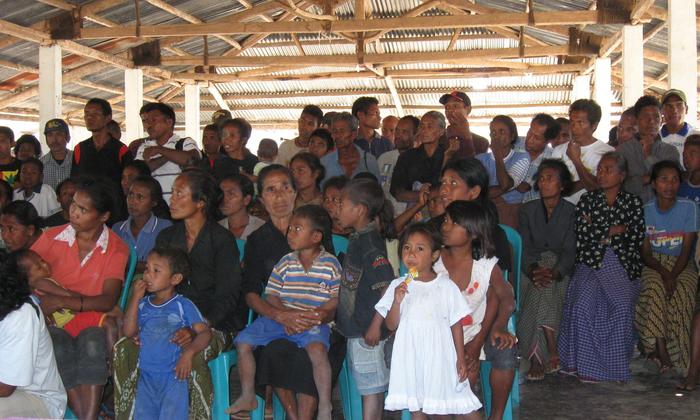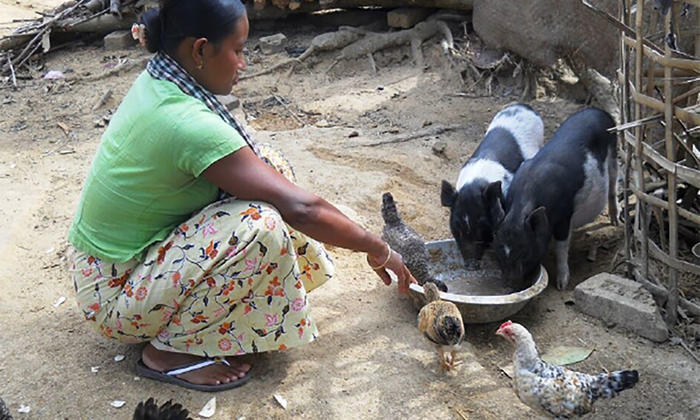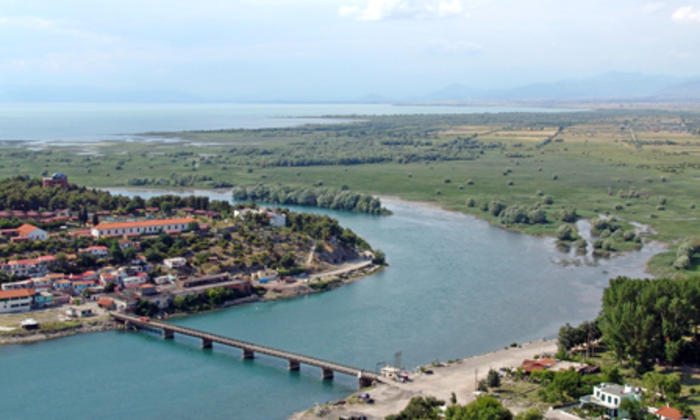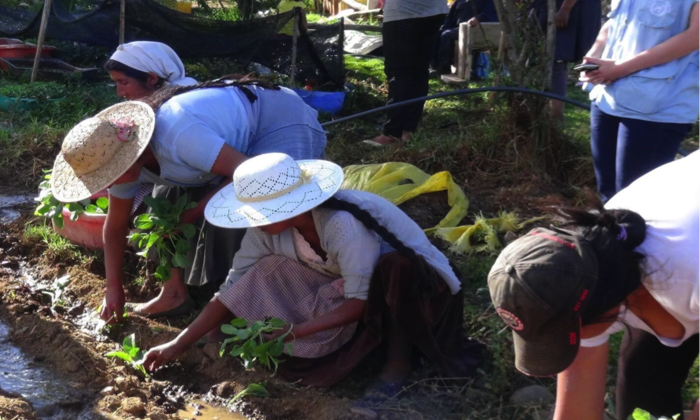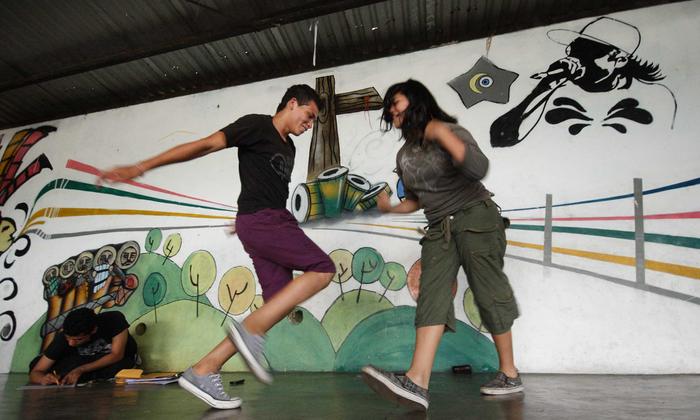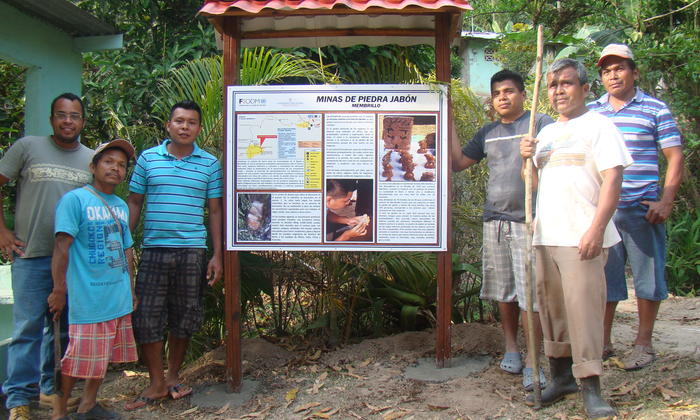Women empowerment in Bangladesh should be done through capacity development of local government institutions to deliver gender-sensitive services and skills trainings on financial literacy and savings habits
Case study
Bangladesh: Strengthening Women’s Ability For Productive New Opportunities (SWAPNO)
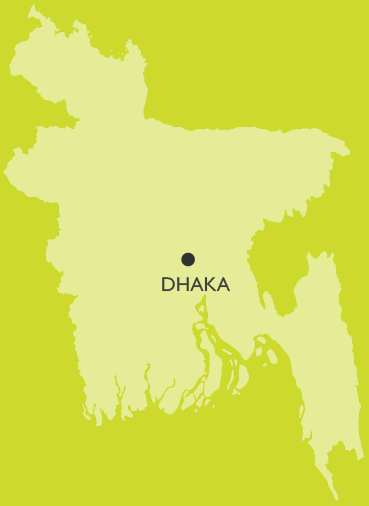
SDGs ADDRESSED
This case study is based on lessons from the joint programme, Strengthening women’s ability for productive new opportunities (SWAPNO)
Read more
Chapters
Project Partners
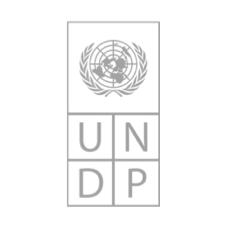
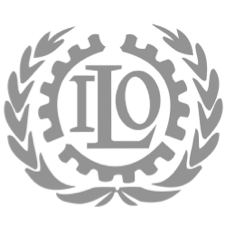
1. SUMMARY
The SWAPNO joint programme in Bangladesh targeted women from ultra-poor and most vulnerable households in the Kurigram and Satkhira districts, areas most affected by natural disasters and climate change. The programme promoted employment opportunities and an innovative public works model for rural and poor women. It recognized the central role of local government in creating accountable and gender-sensitive service delivery to secure poverty reduction and achieve inclusive growth.
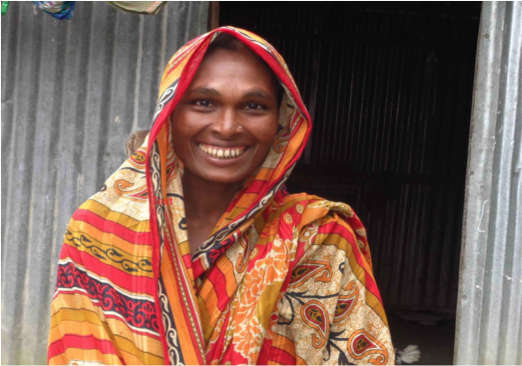
Anowara, one of beneficiaried of the programme through lottery selection
2. THE SITUATION
Despite positive strides in the last few years, extreme poverty has been a serious problem in Bangladesh. The country aspires to eradicate extreme poverty by 2030, but most of its poor population is caught in a cycle that makes poverty reduction challenging. The extreme poverty rate among female-headed households (widowed, divorced or separated) is higher compared to other groups. Women are also most often employed at the lower end of the productivity scale. The secondary status of women in political, economic and social lives leads to entrenched gender inequality in society and raises barriers for women’s participation in economic activities. There is often a mismatch between labour market demands and the lack of skills of women.
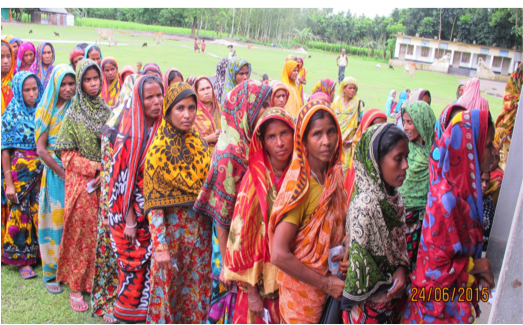
Beneficiaries during the selection proccess
3. STRATEGY
The intervention area for the joint programme has been selected by taking into account poverty rates, vulnerability to natural disasters and geographical remoteness. The joint programme developed and implemented an integrated approach, with social protection and employment taking centre stage. Strategies focused on building human capital, knowledge, skills and confidence of extremely poor women for future employability. It included vocational skills trainings, job placement, diverse climate change-resilient livelihoods options, and social and economic inclusion for the women beneficiaries.
Women beneficiaries were engaged for an 18-month employment tenure, mainly in maintaining or rehabilitating important community assets, but also in public works and community service beyond infrastructure. The joint programme encouraged the women to save a portion of their wages, issued as a graduation bonus, and facilitated linkages with small and medium enterprises to hire the participants after the programme ended. The programme also provided assistance to smooth the transition from safety net employment to market-driven employment, ensuring market linkages and women’s access to essential public services, as well as their social and economic inclusion.
4. RESULTS AND IMPACT
A total of 2,592 rural and extremely poor women who were the sole breadwinners of their families were selected in Kurigram district for 18-month employment contracts, working in maintenance of important economic infrastructure, such as rural farm-to-market roads, embankments, irrigation canals, flood shelters and plantation in their Union Parishads. This type of infrastructure contributes heavily to the economy of poor local communities.
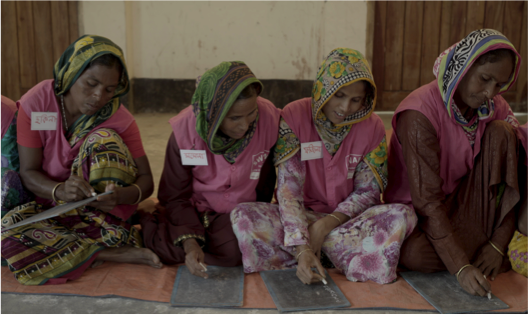
Women from Kurigram district participate in training on financial literacy
At the end of the joint programme, the poverty rate among female beneficiary households declined significantly. Only 27.9% of female-headed households were living below the national poverty line in August 2017, compared to 94.6% in the baseline period of August 2015. Around 91% of women beneficiaries reported to have full control over their property. The women reported higher decision-making ability in income-generating activities, with the programme creating a 53% increase in the share of women empowered to do such decision-making.
Creation of Rotating Savings and Credit Associations have helped participants save money and increased their household assets. In total, 216 Rotating Savings and Credit Associations were formed, and the beneficiaries used savings from their cash wages to start different income-generating activities in addition to their regular employment in public asset maintenance work. The most frequent use of savings was to start income-generating activities such as goat rearing, cow rearing, poultry/duck rearing, rice business, fish culture, and crop cultivation. This shift from
wage labour to a mix of farmer and wage labour has had tremendous impact on these women’s self-esteem and social status.
Beneficiaries have been trained in financial literacy, climate change and disaster risk reduction, and gender and development. Almost all the beneficiaries were aware of the seven training modules and reported that the knowledge gained from them was relevant in real life. Nearly 98% of the beneficiaries reported applying the Simple Accounting module in real life, while about 58% used the Leadership Development module. A large proportion of respondents also reported sharing knowledge from the training modules with their household members as well as their neighbours.
The joint programme also improved environmental conditions since tree plantings were part of the public works and because participants set up safe water and sanitation facilities.

5. CHALLENGES
Ensuring free and fair selection of beneficiaries in safety-net projects in Bangladesh was a huge challenge. The programme pursued specific eligibility criteria and followed an open, transparent and participatory lottery process to ensure selection of the most deserving women. However, in many cases, local government representatives and officials tried to take bribes from candidates and select beneficiaries of their own choice, bypassing the selection process and criteria. Through community engagement, led by local government institutions in coordination with local administration, and under the auspices of the Ministry of Local Government, Rural Development and Co-operatives, the programme mitigated the challenge and ensured accurate selection of beneficiaries for 96% of the SWAPNO households.
Another challenge was identification of suitable market-driven livelihoods for women beneficiaries. To address the challenge, a Market Opportunity Survey was conducted to map the available economic opportunity in the community. In consultation with beneficiaries, skills-gaps were identified and addressed in trainings, such as livestock and poultry management, small business management on different trades and development, tailoring and dress making, and sewing and spinning machine operations.
6. LESSONS LEARNED
- Capacity development of local government institutions is crucial to manage and deliver services that are gender-sensitive and take into account the needs of poor people..
- Involvement of the private sector as non-traditional partner is important for providing employment opportunities to women beneficiaries after apprenticeship trainings. However, it is important to look at potential economic opportunities beyond local market and consider self-employment as local SMEs have limited capacity to absorb trained workers.
- The length of the training can be extended from 18 months to 24 months as the beneficiaries reported that the first year was all about repaying debt and making essential spending. In the second year, they could start thinking about productive investments and assets needed to start income-generating activities.
- Trainings on financial literacy and savings habits are important for women’s economic empowerment and should complement job creation. Beneficiaries should enter the labour market and become economically empowered by understanding the basics of savings self-discipline and investing in productive assets.
7. SUSTAINABILITY AND POTENTIAL FOR REPLICATION
The success of this programme is based on a replicable model that can provide social protection strategy designed to strengthen governance and the systems of social protection. This “graduation model” enhances women’s empowerment and boosts self-confidence and aspiration, which are key ingredients for the programme’s sustainability. By providing livelihood opportunities that improve resilience to climate change, this programme also reduces vulnerabilities emerging from climate change and represents an adaptive social protection response.
After getting huge responses in Satkhira and Kurigram districts, the SWAPNO was going to expand its activities in Lalmonirhat, Gaibandha and Jamalpur districts. In the second phase, the programme would support 4,464 extremely poor women through job opportunities and training that help create income-generating activities.
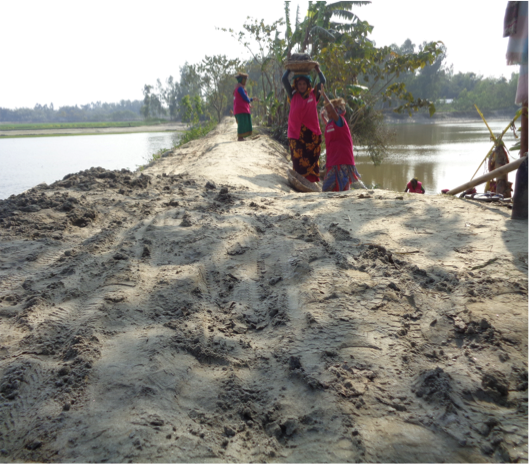
Women beneficiaries involved in public works

